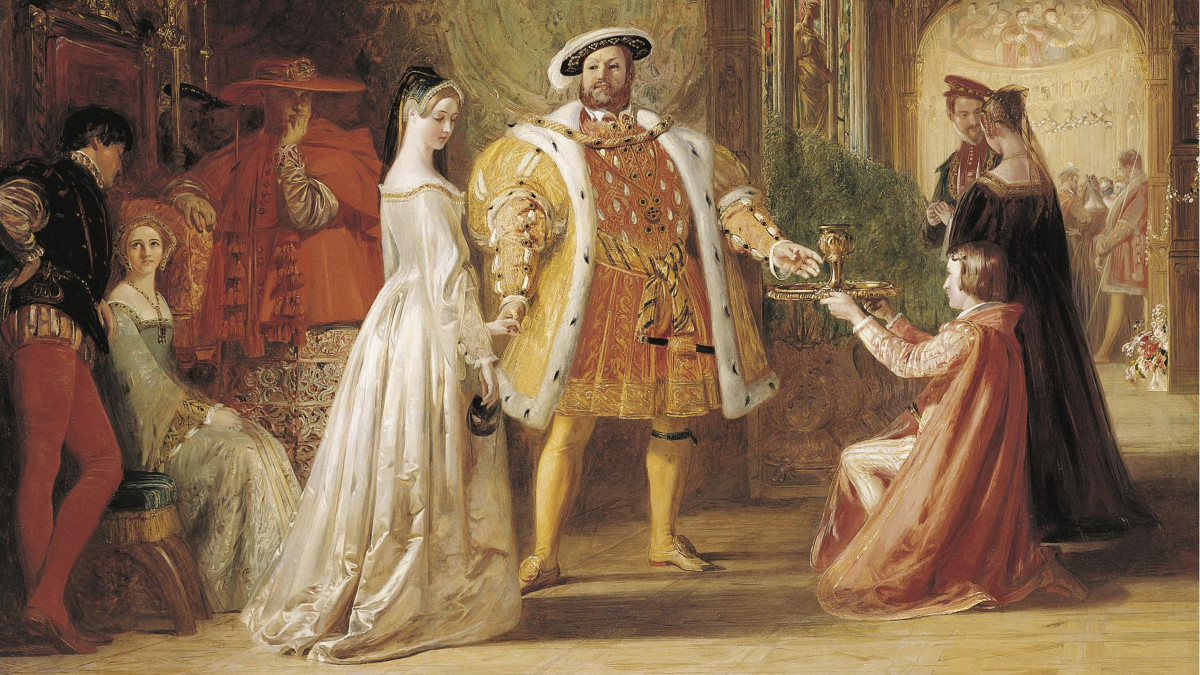In England, the Reformation arose from the desire of King Henry VIII (b. 1491; r. 1509-1547) to put aside his wife, Catherine of Aragon (1485-1536) because she had not given him a male heir. In 1533 Henry married Anne Boleyn (1507-1536), whom he had made pregnant; Thomas Cranmer (1489-1556), the archbishop of Canterbury, annulled the marriage with Catherine. When annulment invalid, Henry’s answer was the Act of Supremacy of 1534, which made the king supreme head of the church in England.
Much more than the private life of Henry VIII was involved in the English Reformation, however. Henry could not have secured the Act of Supremacy and other Protestant legislation from Parliament if there had not been a considerable body of opinion favorable to the break with Rome.
Many English scholars were in touch with reformers on the Continent, and one of them, William Tyndale (1494-1536), studied with Luther and published an English translation of the New Testament. Anticlericalism went back to the days of Wycliffe; under Henry VIII it was aimed particularly at the monasteries. In the eyes of many in England, the monasteries had outlived their purpose and needed to be reformed or abolished.
Between 1535 and 1540 Henry VIII closed the monasteries and confiscated their property; during the 1540s the Crown sold much of the land. The principal purchasers were members of the rising merchant class, of the nobility, and above all, of the country gentry, or squirearchy. By greatly increasing the wealth of the landed gentry, the dissolution of the monasteries amounted to a social and economic revolution.
Henry VIII did not consider himself a Protestant. The Church of England set up by the Act of Supremacy was in his eyes a Catholic body. Henry hoped to retain Catholic doctrines and ritual, doing no more than abolish monasteries and deny the pope’s position as head of the church in England. Inevitably, his policies aroused opposition, in part from English Roman Catholics who greatly resented the break with Rome, and still more from militant Protestants, who began to introduce within the Church of England such Protestant practices as marriage of the clergy, use of English instead of Latin in the ritual, and abolition of confession to priests and the invocation of saints.
Henry used force against the Catholic opposition and executed some of its leaders. He then tried to stem the Protestant tide by appealing to Parliament. In 1539, at Henry’s behest, Parliament passed the statute of the Six Articles, reaffirming transubstantiation, celibacy of the priesthood, confession to priests, and other Catholic doctrines and ritual, and making their denial heresy.
But there were now far too many heretics to be repressed. England was to become a great center of religious variation and experimentation; the Anglican church, much more Protestant than Henry had intended, became a kind of central national core. Though he most likely thought of himself as its preserver, Henry was really the founder of the Church of England.

